Lobelias are an incredible array of annuals, perennials and aquatic plants that produce striking, coloured blooms throughout the spring. These often trailing plants have a wealth of landscaping applications.
Whether in a planter, hanging basket as a border plant or along with other blooming perennials, lobelias are guaranteed to delight. Follow our grow and care guide for everything you need to know about lobelias.
More...
What are Lobelias?
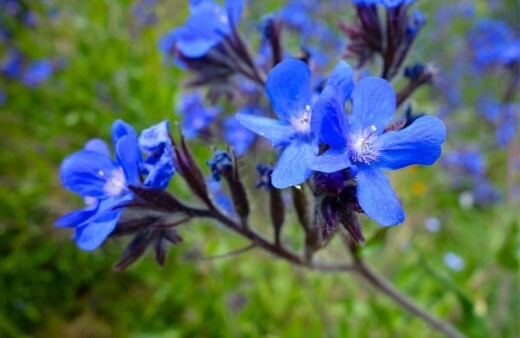
Lobelias include over 400 different species of flowering plants, part of the Campanulaceae or bell-flower family. Originating from the Cape of South Africa, these plants have become a popular landscaping choice, prized for their dark leaves and brilliantly bright blooms.
Lobelias include a range of annuals, perennials, shrubs and aquatic plants.
Although the most common and known variety of lobelias is one which blooms in a magnificent blue, other varieties tend to flower in other shades such as red, lilac, rose and other tropical colours.
These plants grow on average around 7 to 12 cm tall, and can be grown as a border plant, ground cover, containers or even as part of a pond or water feature as they are happy to stand in water.
They’re also a great choice to create a beautiful hummingbird haven in your garden. In the past, native Americans were believed to have smoked lobelias as a means to treat asthma.
Today, however, it is mostly used for gardening and landscaping.
Lobelia Varieties
Of course, there is an incredible range of lobelias. These are some of the most popular varieties available:
Edging Lobelia (Lobelia erinus)
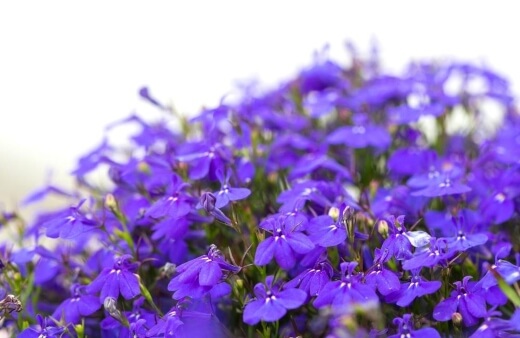
This cultivar is a great choice if you’re considering a trailing lobelia. It produces magnificent, 5-petaled flowers that range in colour from blue, purple, rose and white. It’s one of the best choices for warm weather regions.
Cardinal Flowers (Lobelia cardinalis)

Also known as the cardinal flower, this variety produces gorgeous scarlet red flowers and slightly reddish-bronze foliage. The cardinal flower is one of the best suited for wet regions.
Great Blue Lobelia (Lobelia siphilitica)
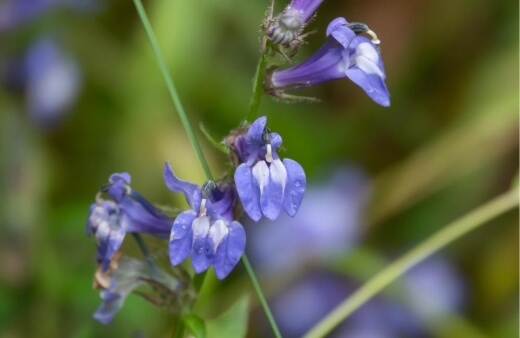
The Great Blue Lobelias one of the most prized varieties producing incredibly long-lasting, bright blue flowers. This variety is considered a wild flower and is one of the most hardy of Lobelia plants.
Hybrid Cardinal Flower (Lobelia x speciosa)
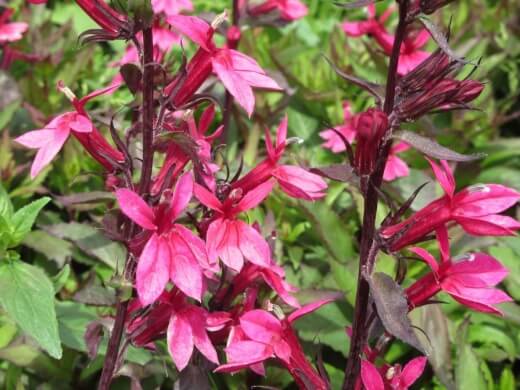
Source: Tortworthplants.co.uk
This is a hybrid species of Lobelia and speciosa that has a particularly long blooming cycle. Its flowers come in a variety of colours, including blue, lavender and red.


Get Your Free Guide:
Master Growing Australian Natives eBook
A Must Have Complete Guide for Every Australian Garden
Get Your Free Guide:
Master Growing Australian Natives eBook
A Must Have Complete Guide for Every Australian Garden
Indian tobacco (Lobelia inflata)
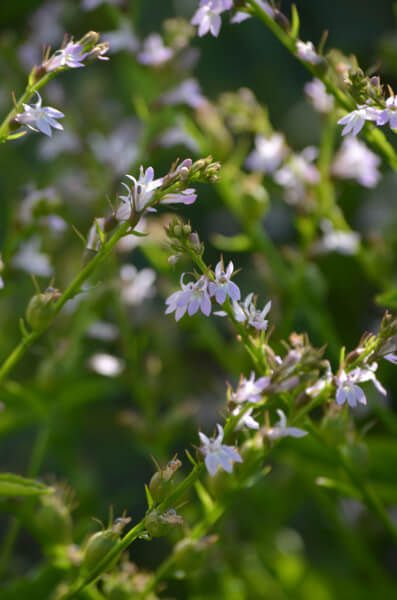
Source: Prairie Moon Nursery
Lobelia inflata is a common herb well known to naturopaths because of its many medicinal benefits. It is used predominantly dried for many phlegm-related respiratory conditions including asthma and bronchitis.
It is also a common ingredient in natural anti-smoking products. It’s not a common garden plant though.
Edging Lobelia (Lobelia erinus)This cultivar is a great choice if you’re considering a trailing Lobelia. It produces magnificent, 5-petaled flowers that range in colour from blue, purple, rose and white. It’s one of the best choices for warm weather regions. |  |
Cardinal Flowers |  |
Great Blue Lobelia |  |
Hybrid Cardinal Flower (Lobelia x speciosa)This is a hybrid species of Lobelia and speciosa that has a particularly long blooming cycle. Its flowers come in a variety of colours, including blue, lavender and red. |  Source: Tortworthplants.co.uk |
Indian tobacco (Lobelia inflata)Lobelia inflata is a common herb well known to naturopaths because of its many medicinal benefits. It is used predominantly dried for many phlegm-related respiratory conditions including asthma and bronchitis. It is also a common ingredient in natural anti-smoking products. It’s not a common garden plant though. |  Source: Prairie Moon Nursery |
How to Grow Lobelias in Australia
Most lobelias require relatively similar growing conditions. In general, they all require a moderate amount of light, rich soil and a good level of moisture. Pick a spot for lobelias that are semi-shaded.
Although they require a decent amount of direct sunlight during the day for a bountiful bloom, too much light can dry out the soil and scorch the foliage.

Pick a planting medium which is hummus-rich and moist. Lobelias prefer a slightly acidic soil, but will adapt in most kinds of sandy or loam soils.
While adding a layer of mulch during the summer is advisable, it should be removed in the winter as it can cause the roots to rot. If planning on growing your lobelias in a pot, choose a potting mix that is rich in organic matter.
Seeds can also be sown directly into the ground or chosen container during the spring. If sowing seeds during the winter, simply keep seedling indoors until after the first frost.
Lobelias are also a great choice for flower beds and raised beds alongside other flowering plants. Ideal plants that will compliment your lobelias are other summer bloomers such as violas, sweet alyssum, pansies, geraniums and daisies.
Lobelias should be spaced 15 cm away from other plants. If you’re planning on growing lobelias in a row, space plants out at least 15 cm away from each other.
How to Propagate Lobelia
The primary downfall of these plants is that they can be very short-lived. Luckily, they’re fairly easy to propagate by means of seeds, cuttings, or by division.

Propagating Lobelia from Seeds
There are two ways to grow Lobelia from seed. Firstly, you could scatter the seed in the area that you wish for them to grow or you could raise them in seedling trays. Raising them in seedbeds is the best way to get uniformity of plants and also you are more able to control exactly the position that they will grow in.
The first option is by far the easiest and less time-consuming while the latter takes considerably more time and effort but there is more enjoyment and it’s an easy seed to learn how to propagate.
To Sow Lobelia in Seedling Trays
If you decide you want to grow them in seedling trays, fill the tray completely with a seed-raising mix and shake the tray until the mix settles. This should leave a gap of a couple of millimetres for you to plant the seed.
Plant 2-3 seeds in each punnet or if you are just using a straight seedling tray then cover the top of the soil with your packet of seeds. Cover these with another thin layer of seed-raising mix and tap down to remove any air pockets.
Water with a demister as too much water will make your seedlings struggle. Store them in a place where they can receive some filtered light and warmth.
As your Lobelia seedlings begin to appear above the top of the soil, pinch out the extra ones leaving the strongest ones to continue growing. The seedlings will begin to appear within 7-10 days of potting and you should pinch them out within a couple of weeks of them sprouting.
If you leave them too long it will be harder to separate the seedlings. Once they have grown to a size of about 5 cm and have produced at least 2 normal leaves they will be ready to plant out into the garden.
Remove each plug and transfer into the soil watering in with a soluble fertiliser and sprinkling a ring around them to stop snails enjoying your new seedlings. You will start to see your new lobelias begin to flower within 10-12 weeks.
Propagating Lobelia by Division
Plants can be divided during the spring. Simply dig up plants from the ground, or shake them loose from their pots. Give the plants another good shake to remove any remaining soil around the roots.
Gentle tousle the rootball apart to create two plants. Replant in the newly desired position and fertilise a few days after planting.
Propagating by Cutting
Stem cuttings can be taken during the spring. Simply remove a piece of stem with a decent amount of healthy leaves. Remove leaves on the lower third of the cutting, dip into a rooting hormone and plant into a smaller pot with a rich, organic potting mix.
Once new growth appears young plants can be replanted outdoors. Avoid planting in the winter as it can cause too much distress for young plants.
For more details, here is our step by step guide on how to take a cutting.
Caring for Lobelias
Keeping an adequate moisture level is the most important part of Lobelia care, unless of course you’re growing your lobelias standing in water. Soil should be kept evenly moist, especially during a very hot summer.
Regularly check the soil, if the soil feels slightly dry to the touch, soak deeply.
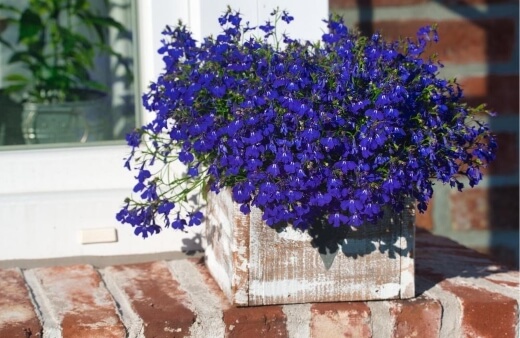
Fertilising Lobelia
Fertiliser can be added during the spring to help promote growth and more flowers. A general purpose fertiliser will do the trick, although it is also advisable to add some rich, organic compost annually.
Here is our review on the best fertilisers you can get online.
How to Prune Lobelia
Lobelias are quite self-caring, so dead-heading plants will not be necessary. However, pruning can be done to revive plants when blooming appears in the soil. Prune back a 1/3 of the plant during spring can help to regenerate growth and encourage blooming.
A light layer of mulch can also be added during the spring and summer to help keep soil moist in hot weather. However, take care to remove this mulch layer in the winter.
Lobelias can be easily damaged by frost. In regions which experience a very cold winter it may be advisable to protect your plants. Bring plants which are being grown in pots indoors or under covered areas.
For lobelias being grown in the ground, adding a burlap cover or tent over plants can protect overnight.
Common Lobelia Pests & Problems
Some varieties of Lobelia may be susceptible to mold and root rot. Be sure to keep your plant in an airy location and a suitable soil mixture to avoid this issue.
Common infestations such as spider mites and fungus gnats are also possible. Mites are probably the biggest issue which growers experience.
Mites feed on the leaves of the Lobelia, causing them to turn brown over time. Leaves can be treated with neem oil or an insecticidal soap.
In general, try to keep an eye on leaves for any issues. Should your plant be browning from the base, however, this may be a sign of a deeper issue.
The notorious corn earworm is a larva that digs into the base of Lobelia plants, feeding on the inner stem and killing off your whole plant. While they are hard to treat, spraying the base with acephate sprays can help to prevent an infestation.
Under or overwatering can also cause limp, lifeless foliage and a lack of flowers. Keep a close eye on your soil year-round.
Slugs and snails may also be attracted to your luscious foliage at the beginning of spring. Consider adding some preventative measures in early spring to avoid these pests devouring your plants.
Sprinkling coffee grounds is a great idea, which won’t affect the health of your plants.
Lobelia Gardening Ideas
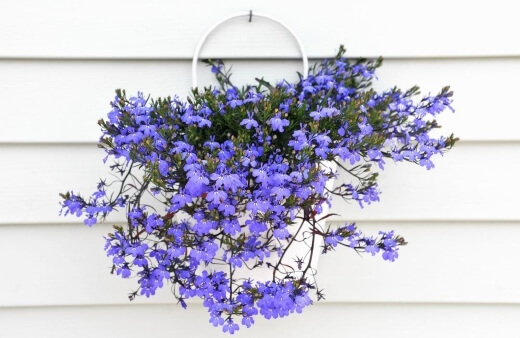
There are so many ways that lobelias can be grown, especially when a range of different cultivars are grown together to create a gorgeous colour-filled spectacle.
Here are a few ideas to help you out:
- Perennial varieties can be grown on the edge of flower beds to create a bright, defined border.
- If grown in a container, they’re a great choice for a centrepiece or striking visual aspect alongside pools or patios.
- Trailing varieties can be grown in hanging baskets or window boxes, giving a wonderful cascading effect.
- Create a butterfly garden by planting a range of varieties in your flowerbed, guaranteed to attract a range of beautiful butterflies in the spring and summer. It pairs beautifully with common milkweed too.
- Lobelias with a white flower are great for moon gardens.
- Smaller growing varieties can be added to a mixed planter, perfect to line your patio or balcony.
- They can also be used as an edging plant along walkways.
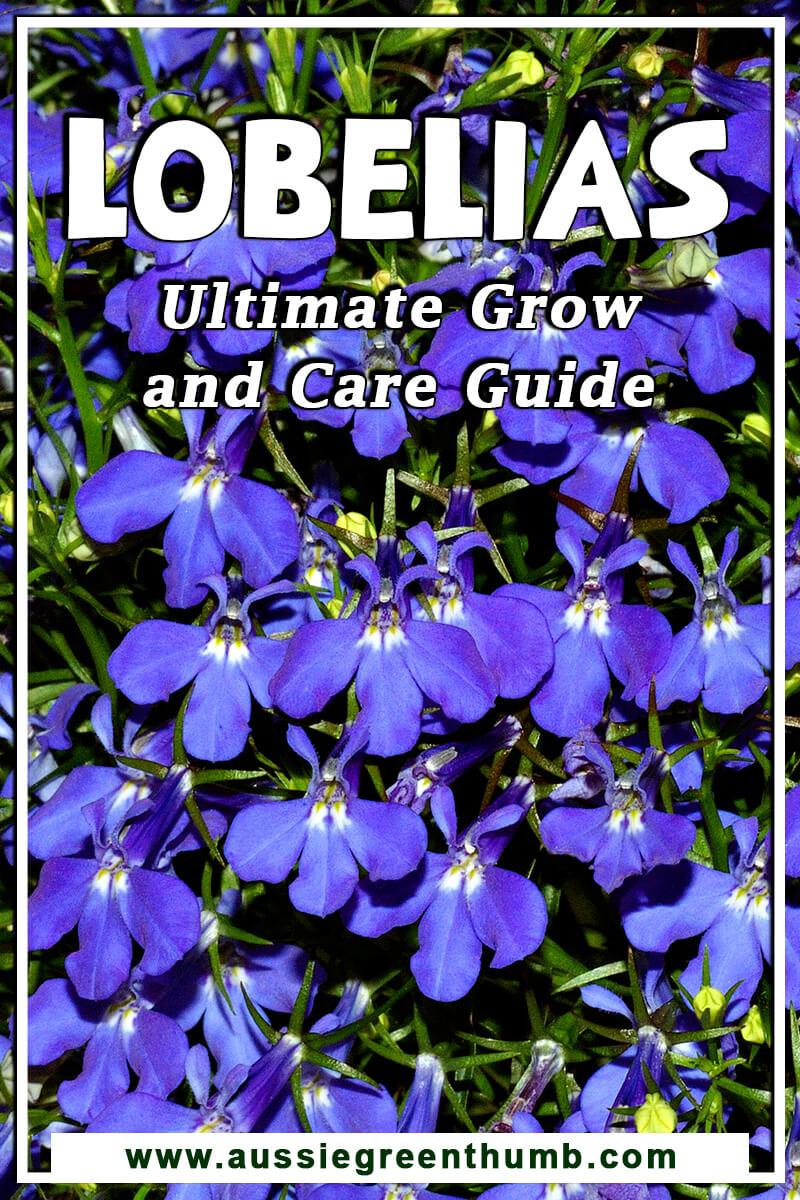
Let’s Start Growing Lobelias Today
While they take some effort to get established, once they begin to bloom you’ll definitely enjoy the colour and spectacle they’ll add to your landscape.
Whichever variety of Lobelia you decide to grow, these plants will not disappoint.
Published on January 12, 2022 by Maisie Blevins
Last Updated on October 18, 2025




